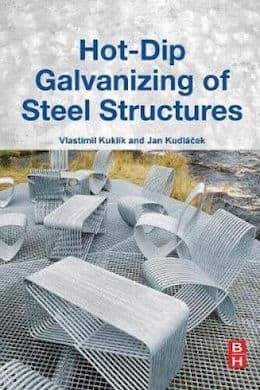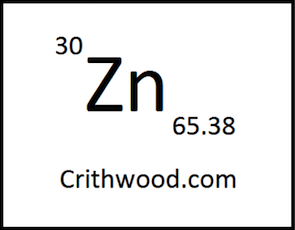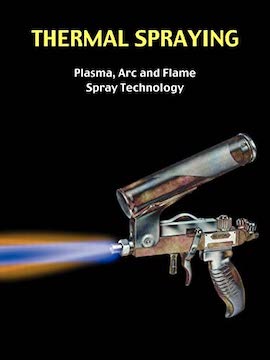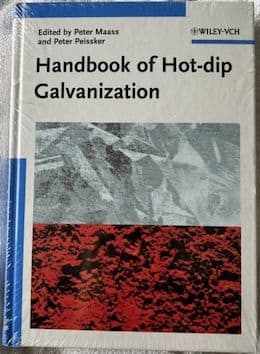
-----
Comparison between hot dip galvanizing and zinc metal spraying
Q. Dear Sir, I'm most surprised that all over the net, there is a lot to find about zinc and anti-corrosion techniques, though there's nothing on a technique used in shipbuilding and ship repair: - blast cleaning (AlO2) a surface. - "gunning" with a zinc wire which is melted down and sprayed onto the surface thickness till 900 gr/m2. I'm looking for info about the technique and suppliers. Can someone help me ? regards,
Van de Walle Ghislain- Belgium
1995
A. Hi, Gislain.
You might talk to Tafa Corp. [Concord, NH].
Although it's expensive, ASM International has a CD-ROM covering thermal spray technology. See www.asm-intl.org/mi.

Ted Mooney, P.E.
Striving to live Aloha
finishing.com - Pine Beach, New Jersey
Ted is available for instant help
or longer-term assistance.
Q. Many thanks for the Tafa info. Considering buying the Tafa equipment we have talked with some major clients about the process. Most of them know the process of spraying zinc but don't see it as a replacement for hot dipping of zinc. Altogether one can say that the process over here is little known, and thus opinions are reserved about the quality. We should prefer such a process above hot dipping because we lose JIT delivery control and receive the materials often deformed.[Lorry- transport of about 70 km].
Does such a process withstand weather conditions like hot dipped zinc? Is there an adhesion problem? Can the layer thickness be controlled in an semi-automated process? Are we right to convince our costumers? Is there really a fe-contamination in hot dipping and how severe is the risk? Does sprayed zinc withstand better the outside air? Is the whole process of shot blasting and gunning zinc really less expensive?
Sorry for the amount of questions, but I'm a doubting soul whether we should go one way or another. Many thanks,
(returning) - Belgium
A. The only questions that I have any familiarity with are:
1). Iron contamination is not supposed to be a real problem in a well-operated hot dip line.
2). My understanding is that it doesn't matter a lot whether you apply the zinc by hot dipping, electroplating, mechanical plating, or whatever: "zinc is zinc" and the corrosion resistance and longevity are fairly much proportional to the thickness.
The companies in our Shops Directory may have some answers for your questions.

Ted Mooney, P.E.
Striving to live Aloha
finishing.com - Pine Beach, New Jersey
Ted is available for instant help
or longer-term assistance.
Multiple threads merged: please forgive chronology errors and repetition 🙂
Q. Sir,
I am working in a metallizing works as a marketing executive. We are in field of sandblasting, spray galvanizing and aluminizing.
I want detailed comparison between hot dip galvanizing and spray galvanizing.
I hope I will get best answer from your site.
by Kuklik & Kudlacek

on eBay or Amazon
or AbeBooks
(affil link)
metallizing works - Bangalore, Karnataka, India
2006
A. Firstly there is no such thing as "spray galvanizing".
There is zinc metal spraying, where a stream of molten zinc is blown onto the surface or a substrate.
There is galvanizing, where steel (or iron) articles are immersed in molten zinc.
In the first case, the adhesion is mechanical, and depends greatly on the roughness of the steel. The adhesion fails often. The system has the advantage that it can be applied on a site, not in a factory.
Metal spraying is usually porous, and the underneath metal (substrate) can be exposed through the holes. It usually needs sealing with an organic coating. There is no practical limit to the size of item to be coated. A bridge could be done in situ.
In Galvanizing the adhesion is by alloying the zinc to the steel. The system has the disadvantage that it is a factory only process, but it lasts longer, adheres better, and is smoother. It is not porous, and needs no sealing coat.
Generally, per area unit, this is a lower cost process, but only limited size items can be coated. Biggest items perhaps 28 meters long x 1.5 m x 3 m, but more typically 15 x 1.5 x 3 m.

Geoff Crowley
Crithwood Ltd.
Westfield, Scotland, UK

Q. Hello,
Is there a definite visual difference between HDG and zinc metal spray finish? Does all HDG result in the 'spangle' finish, or are more uniform finishes achievable?
Our competitors claim to HDG their product, but I am not convinced.
- Surrey, United Kingdom
April 17, 2010
A. Hi, Paul,
We thank Geoff for explaining the theoretical advantages/disadvantages between the two processes, so now the question becomes: Can you demonstrate that your product is superior to your competitor's in some way, or can they demonstrate that theirs is superior to yours? I think that's the important point because any process can be done with good quality or worthlessly poor quality, and it makes no difference what process either of you claim to do if the result is poor.
Not all hot dipped surfaces get a spangle finish; the familiar roofing nails exhibit no spangle at all, and spangle can to a large extent be controlled, with some folks liking it and some not.
Whether he is "entitled" to call his process "HDG" may be a moot question because people will always use terms to their advantage anyway. I would not focus on semantics, but on some test that proves some element of superiority -- perhaps bending a part over a mandrel until the coating breaks away, a salt spray test, an abrasive wear test, a drop of acid on the surface -- anything that purports to show advantage :-)
Good luck with it.
Regards,

Ted Mooney, P.E. RET
Striving to live Aloha
finishing.com - Pine Beach, New Jersey
Ted is available for instant help
or longer-term assistance.
Q. Sir, I wanted to know if hot zinc spray is a cheaper process as compared to hot dip process, and does it give same result as hot dip?
Sachin Uttekar- Thane, Maharastra, India
July 17, 2013

on eBay or Amazon
or AbeBooks
(affil link)
A. Hi Sachin. The American Galvanizers Association claims in "Metallizing vs. HDG" that the initial cost of HDG is about half of flame spray and it will last far longer with lower maintenance costs. AFT Fluorotec claims in "THERMALLY SPRAYED ZINC VS HOT DIP GALVANISING" that flame spray is superior in numerous ways :-)
I'm sure you already know that any time you see the longterm widespread application of competing technologies, both are good & viable, and neither is objectively "better", because an inferior process would have quickly died out. Which process you should select will depend upon an evaluation of your parts and the specific application.
As implied by Geoff's reply, a tester with an axe to grind may have been ultra careful, taking forever and a day to get a thick even coating with minimal porosity, which may not be at all representative of what production sprayers actually do.
In addition to everything else you read, and Geoff's informative comments, I would suggest that if you are going to paint the parts, that's an element that suggests hot zinc spray; whereas if the zinc is the final layer, that's an element that leans towards hot dip galvanizing. Good luck!
Regards,

Ted Mooney, P.E. RET
Striving to live Aloha
finishing.com - Pine Beach, New Jersey
Ted is available for instant help
or longer-term assistance.
Q. What is purpose of HDG and zinc spray?
Mohammed shajid- Dammam saudi Arabia
October 2, 2015
A. Hi Mohammed. The principal use is to sacrificially protect steel from corrosion. Zinc is anodic to steel and will galvanically protect it; plus in normal atmospheric conditions the zinc forms stable glassy corrosion products (complex carbonates and oxides) that tend to seal the zinc away from the environment and greatly slow its corrosion.
Regards,

Ted Mooney, P.E. RET
Striving to live Aloha
finishing.com - Pine Beach, New Jersey
Ted is available for instant help
or longer-term assistance.
October 2015
ACRONYMS:
"C5M" = Very high corrosion risk, coastal and offshore areas with high salinity per ISO 9223
Q. Hi, we are transformer manufacturers. We'd like to go for Hot zinc spray setup in our factory. Suitable for C5M environment.
When I refer to suppliers, there are various methods, like Arc Spray, Flame spray, Plasma spray, etc.
Which one should we prefer?
What are the main features to be checked?
Surface finish should be smooth.
Your reply will be highly appreciated.
- KUWAIT
November 2, 2015
Q, A, or Comment on THIS thread -or- Start a NEW Thread

